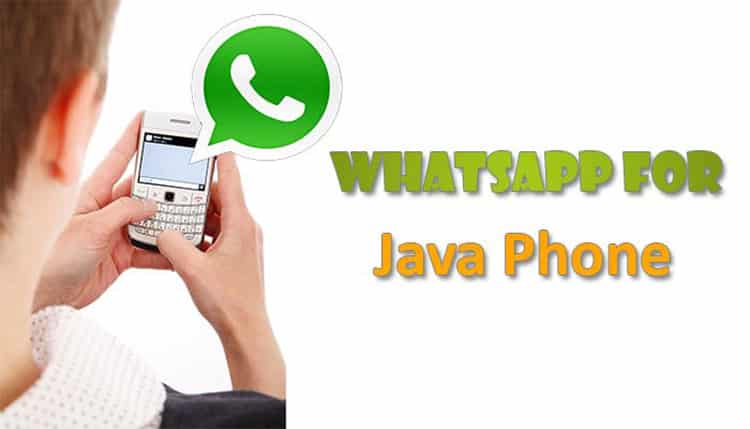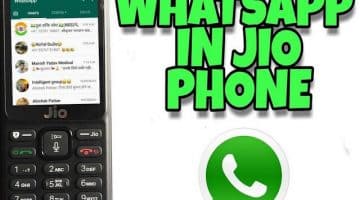We will have some basic introduction to the Java Mobile Platform and then see how to install WhatsApp on your Java phone. We will also see the latest developments in this area.
What is Java Mobile Platform?
Java Micro Edition, also known as Java ME is a platform specifically developed for smartphones and other portable digital devices. It is an open source system used in Personal Digital Assistant (PDA), Televisions and other devices also apart from mobile phones. This platform was earlier known as J2ME. There are very few developers who can work on the peripherals of WhatsApp development, and freelance web developers have an opportunity to know more about this platform.
Java Software for Mobiles:
Java is an Objective Oriented programming language and using it for Mobile devices was a new idea when tried first. Later different versions were developed from this original platform and used in various mobile phones. The phones were not priced very high and were innovative in nature when launched. The Java ME code has the GNU General Public Licence. It means, you can use this software for study or your commercial use, you can share it as well as modify the same.
Using WhatsApp on Java Phones:
With that introduction. Let us see how to install WhatsApp on these Java Phones
WhatsApp, as everyone knows, is a famous online tool to connect with your friends using text chat, audio, and video interaction. WhatsApp is making multiple changes (Additions) to its features, and you see video calling, and WhatsApp Status feature (Video/Picture) recently added to WhatsApp latest updates.
For Android and iOS phones it is very easy, as you can go to the respective Apps repository and download or upgrade the App. It is not that easy (not difficult also) to get this communication tool on your Java Phone.
How to Install WhatsApp for Java Mobile Phones:
For individual phones, the process may slightly differ, but the basic process remains same for most Samsung, Nokia or LG phones using Java OS. You can search the specific download file, known as WhatsApp Jar file to your device. It includes WhatsApp for Java/Samsung phones, for Phoneky, for Bada phones, and Nokia phones. These are the variants of Java phones, and you can look for specific Jar file for your phone using these search criteria.
- Download the Jar file for your phone
- When you see the WhatsApp icon copy on your phone, switch off the phone
- Restart the phone and open Apps folder from your mobile
- Click on WhatsApp icon and install the App
- Once again restart the phone, and you should have WhatsApp on your Java phone
As mentioned earlier, there are variants of phones and files, and for some of your phones, you will have to perform the below mentioned additional steps:
Do you see a window pop-up asking you to agree with terms and conditions? Agree and proceed further. You may be even asked the Country from where you are using WhatsApp along with your mobile number. Once you provide the phone number, you will receive a verification code, and on entering this code, your WhatsApp will be active.
Follow similar steps for installing WhatsApp on the Samsung Bada Phones. Once you download the Jar file on your computer, copy the same to this mobile phone and click on the same to start the installation. On verification, you should have WhatsApp on your phone.
Same steps to be followed for Phoneky and Java Mobile9 phones. Many Jar files are updated, and you may check on your mobiles to see the latest updated date and compare with the version available on the internet. If you have old versions, go ahead and install the latest Jar files.
In some cases (mainly Nokia Phones), you will also see an option to download two files (one is .Jar, and another is .Jad). You have to download both of them on your PC and copy them to your Nokia phone in the same folder. Now you can install the App and restart the phone once to enjoy WhatsApp. It is not the method for Samsung phones.
Working on Java ME:
Java ME has two profiles for easy implementation on different devices. The Mobile Information Device Profiles are for smartphones. Another profile is a Personal Profile, more for the set-top boxes. You may not believe, but there are more than 2 billion Java ME enabled devices in the world. If you have heard of Nokia’s Series 40, Samsung Bada and the Symbian Operating Systems, they all have derived from Core Java. Java ME is also available Windows and Android environments.
Oracle Updates:
The Java ME SDK 8.2 is available to support Oracle Java ME Embedded 8.2 and 8.1 platforms and includes plugins for NetBeans.
The Mobile Information Device Profile (MIDP) 2.0 has relation with the Connected Limited Device Configuration (CLDC). It is the Java runtime environment for today’s mobile devices and PDAs.
The MIDP is an officially published requirement for the use of Java on mobile phones and embedded devices. It is a part of the Java Platform and Java ME framework. It works in conjunction with CLDC, and it was a Java community project.
The CLDC describes the basic set of libraries and virtual machine features. You are supposed to use them in each and every implementation. Combining CLDC with another profile can provide the developers with a platform to build applications on embedded devices.
Apart from going to the root sources like Oracle, Apple, Microsoft and IBM; you can also keep visiting the freelance websites to get a feel of technology trends and know the opportunities in different technical platforms.
Summary:
WhatsApp is a popular online free messaging app and used worldwide. For such Apps or games which become world famous, every single mobile user (or at least the younger generation) like to have them quickly on their phones. Such articles will help them to get WhatsApp and other Apps on their phones using any operating system. WhatsApp installation already there on most (if not all) Android Phones and iPhone, and now you know how to install it on Java phones and Java variants also.




